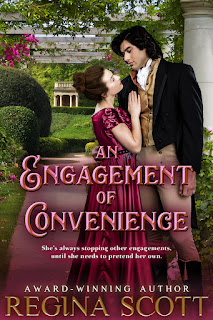Princess
Sophia Matilda, the twelfth child and fifth daughter of George III and Queen Charlotte,
was born November 3, 1777 at Buckingham House in London, after a mere fifteen
minutes of labor—after twelve children, the queen was clearly well-versed in
childbirth! She entered the family at a fraught time; Britain was at war with
its American colonies, and walking on eggshells waiting for word on whether the
French were about to join the war on the American side (which they did a few
months later, in March 1778.)
Flora
Fraser, author of Princesses, the excellent group biography of the daughters of George III, (Amazon affiliate link), posits that the three elder daughters (the Princess
Royal, Augusta, and Elizabeth) and the three younger (Mary, Sophia, and Amelia)
were almost more cousinly than sisterly. They generally lived in separate
houses in Windsor, and the elder group received much more attention from the
queen, who by the time of Sophia’s birth was simply overwhelmed by the demands
of her large family. As a result the younger girls, mostly left to nurses and
governesses to raise, received a much more haphazard and superficial education.
Sophia
received even less attention from her parents when, around her eleventh
birthday, the king suffered his first period of madness. But aside from that frightening
time, she seems to have had a quiet, pleasant childhood. She was delicate and
blonde, with her father’s somewhat protruding eyes (she remained child-like in
appearance all her life) and despite her extreme nearsightedness was an avid
reader and accomplished needlewoman, even if her handwriting was terrible.
In her teens, a bad case of chicken pox led to month of ill health, with frequent “fits”,
difficulty swallowing, and low spirits. She was sent to the spa at Tunbridge
Wells and seemed to eventually recover, but this would be only the first episode
of poor health she would suffer, necessitating frequent visits to various spas
and seaside towns for sea-bathing.

Colonel
Garth eventually “adopted” the boy and was a fond parent—perhaps a little too
fond, as Thomas Garth turned out to be a bit of a rotter, later on trying to
blackmail the royal family and running away with a married woman. But the Colonel
continued as the king’s favorite equerry, while for all intents, Sophia’s life
was over. While her three of her sisters would eventually marry, she would
remain a spinster all her life, condemned by her youthful mistake to live more
or less retired (though she hints in her correspondence to having tender feelings
for an unnamed man at court.) General Garth’s very public embrace of his child
eventually drove them apart, and Sophia dedicated herself to being a companion
to her father before his final descent into illness…when she herself was not
ill. By 1812 she had become a semi-invalid, “nervous and weak”—the victim of
psychosomatic illness, perhaps?
The
king’s permanent illness left her to devote herself to other members of her
family. She was a favorite of Princess Charlotte, and was devastated by her
death in 1817; the death of the queen the following year was a further blow,
though their relationship had generally been a chilly one. But it was the king’s
death in 1820 that was the hardest…yet it also set her free. She moved to
London, taking a house near Kensington Palace (and eventually moving into the
palace itself), and actually began to venture out for walks and rides and
invite a few friends to visit in the evenings. And she became the friend of her
brother Edward’s widow, the Duchess of Kent, along with her tiny niece,
Victoria…and of the Duchess’s comptroller, Sir John Conroy.
For
several years, the extended family lived a mostly peaceful life at Kensington;
Sophia doted upon her niece, who returned her affection. We’ve seen the
extraordinary influence Sir John exerted over the Duchess; he exerted the same over
Sophia, who was ever susceptible to a strong man—especially one who kept Thomas
Garth, her now-grown illegitimate son, from importuning her for money. But Sir
John’s machinations set Victoria against not only him and her mother, but
Sophia as well. On becoming queen Victoria paid dutiful visits to her aunt, but
the old affection was gone.
Almost
totally blind by 1837 and forced to leave the dilapidated Kensington, Sophia
still had two sisters left. After Augusta’s death in 1840, Mary devoted her
still considerable energies to Sophia, and the children of her youngest
brother, the Duke of Cambridge, also visited frequently. But the last years of
her life were twilight ones, in all sense of the word: blind, mostly deaf, and crippled,
she could do little but wind yarn and write illegible letters to her remaining
family members. She passed away in May 1848.











